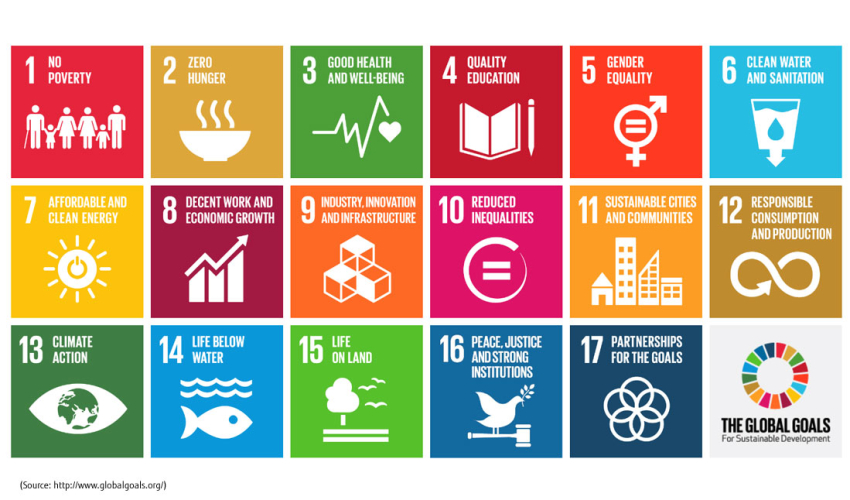In September 2015, the General Assembly adopted the 2030 Agenda for Sustainable Development that includes 17 Sustainable Development Goals (SDGs). Building on the principle of “leaving no one behind”, the new agenda emphasizes a holistic approach to achieving sustainable development for all; read the landmark study titled Envision 2030. A vision to transform this world to make the earth a better living place by 2030 laid the foundation of a new milestone.
Understanding a problem is fundamental, but the case is a bit different in our country where very few people even notice the anomaly. On one hand, the world strives hard to achieve SDGs after their minimal success by 2015 in achieving the targets set as Millennium Development Goals.
How would consensus on SDGs – Sustainable Development Goals – expand if the youth were almost unaware of the term SDG? Representatives of 193 countries agreed to cope with the challenges but the follow up seems conforming to the precedents. Educations’ inevitable role in the accomplishment of SDGs has been, unfortunately, undermined yet again. Almost none of the educational institutes in Pakistan have shown intent to embrace the SDGs to make the next generation globally compatible and socially more responsible. The massive challenges faced by our nation demand a well-equipped and well-informed youth able to align themselves to SDGs.
Pakistan, in general, suffers from almost all the issues ranging from poverty crises, illiteracy, health issues, and gender inequality to peace, justice and strong institutions. Reflection of serious efforts isn’t evident in the actions or policies; as a result, the majority doesn’t know how to act in order to make life better. Only wanting a better life in present and future won’t work without a measured effort of youth. Time is passing rather quickly and our students and most of the teachers aren’t even conversant with the prevalent miserable conditions of the larger proportion of mankind as well as of the scarcity and misery of the future generations.
The most effective way of spreading awareness and preparing the youth is to prepare syllabi and activities which include SDG-related material. It will attract the kids as well as provide a positive change to the teacher. The global goals can be taught in many ways at school.
Lesson plans
Introduction to lesson plans developed in a way which includes the SDGs allows children not only to learn and understand the problems but also align themselves to fight the challenges faced by humanity. A wonderful website The World’s Largest Lesson is a part of the mighty mission of sharing SDGs.
Textbooks
Textbooks should include these 17 goals in reading lessons in an interesting way. Along with reading fictitious literature, lessons depicting impacts of contemporary issues like poverty, education, health and gender inequality etc. should also be read. Schools should persuade the publishers to produce SDG-related material.
Talks on SDGs
Discussions and debates on highlighting and resolving the issues should be part of daily activities, which will indubitably have an everlasting impact on kids. Students must be taught to take action instead of acting as a mere spectator passively. Youth must learn to speak up for the goals to spread the message. Government schools can prepare the students for a great debate on TV and social media.
Global week
Global goals make a perfect theme for weekly activities for they carry diversity as well as interesting activities can be performed. A global week can also be used to impart knowledge in shape of lectures and presentations on SDG-related issues must be added in annual calendars of the schools here. Students should be encouraged to do research on the issues like poverty, hunger etc. When kids will go online to find the details of a certain issue or to understand the dynamics of something, they learn which can’t be taught in the classroom.
SDGs and religions
All the goals have a very close relationship with all the religions of the world and why not use these heavenly saying to propagate the SDGs? For instance, Islam clearly says the cleanliness is half of the faith, and commands, “He is not a believer whose stomach is filled while the neighbor to his side goes hungry.” (al-Sunan al-Kubrá 19049)
Classroom decorations
Classroom decoration competitions depicting the SDGs can do wonders. Activities like put-up a poster, draw SDGs prepare students for any kind of question on global goals to win the competition as the assessor can ask anything related to SDGs.
SDG summer schools
Summer schools are in vogue nowadays and SDGs can be taught through them effectively. When students are under no pressure, they absorb the ideas with an open mind during summer schools. The venue of a summer school can be a place where kids learn about the difficulties of life and impact of their actions on future as well as contemporary living beings.
Projects on SDG
Connecting what they study with reality by making a project like cost-effective energy production and penning down a proposal in order to obtain funds from local or international sponsors would not only enhance their interest in the subjects but also encourage them to be innovative.
Conflict resolution
Teach students the skill of conflict resolution to enhance their confidence and enrich their analytical skills. They should be taught to derive positivity and learn to acknowledge others’ independence and rights. Let them know the advantages and value of gender equality.
Nutrition in school
Appoint a nutritionist at school not only to save kids from effects of malnutrition but also to teach them the important nutrients and hygiene.
Get, set, go
The performance of our government schools will be meaningless if children don’t become conversant with SDGs. Youth will be destructive at large instead of being a savior. Our public sector schools have tremendous access to resources and intellectuals, which are often wasted. The education sector must take up the challenge, by not only imparting the global goals, but also by offering incentives in shape of marks, visits and awards to the SDG-related project developers. Our kids must learn the necessity of promoting the global goals and only schools can teach them the importance of a green, clean, safe, just and healthy environment. We are on the verge of facing an unfathomable crisis. Let’s play our part! To begin with, introduce green schools or clean schools with smaller carbon footprint and least waste of resources such as paper, energy and time.
Government schools have to step ahead by introducing SDGs’ teaching in every class. These schools can organize a district wise project competition leading to the provincial or national level similar to sports competitions. Donation centres can be opened within the school premises. The one-student one-tree project can completely change the climatic system of the area.
Teaching kids the impact of seemingly insignificant actions of an individual on sustainable development can help solve the cause. But the misdirected syllabi, misplaced intentions, dogmatic mindset and rigid teaching methodology have proven to be the greatest hindrance. The earth, climate, mankind, living beings and forests all are dependent on our acts: none other than us can save the earth. Let the youth know and understand the need of SDGs in life. A nation already lagging behind must act without any procrastination to contribute to make the world a better and safe place to live.














